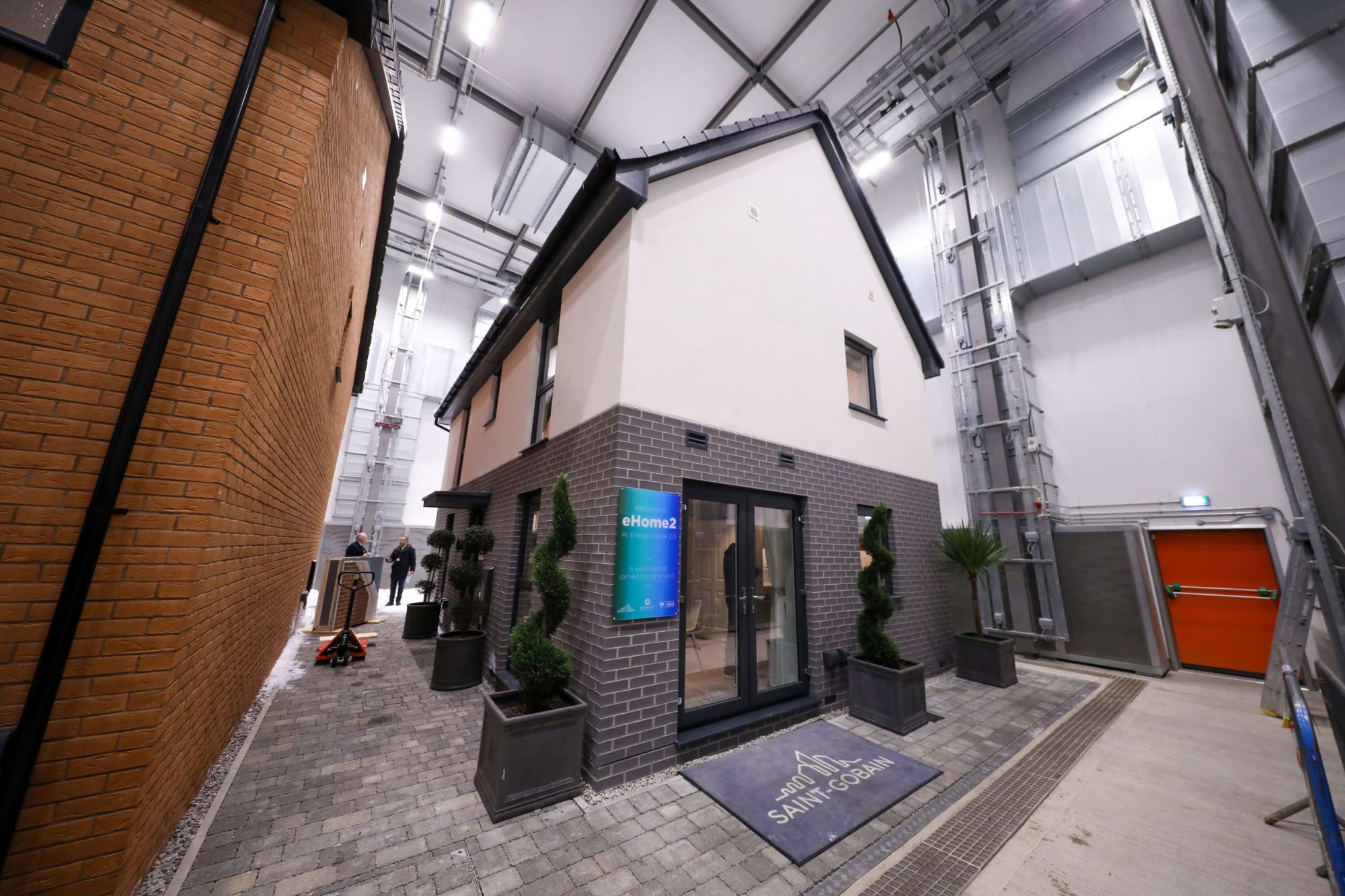Life In Black & White
Saint-Gobain Glass has been lauded for its contribution to creating the Black & White Building, the tallest mass timber office building in the capital...
Read Full Article
Mike Butterick tells The Installer that thanks to a Saint-Gobain Glass lead world-first research project, we now have the chance to discover the real-life benefits that high-performance windows and glazing can have on energy efficiency and comfort.
Our collaborative project involving the entire supply chain is working to demonstrate how the existing UK window industry is ready and able to deliver the high-performance casement windows demanded by the proposed Future Homes Standard.
eHome2
eHome2 at the University of Salford is a one-of-a-kind research facility constructed inside a new purpose built climate-controlled test facility. Part funded by the European Regional Development Fund, it houses a full size three-bedroom detached Barratt Homes show house.
The operationally net-zero property includes double and triple-glazed windows incorporating high-performance Planitherm One T low-e coated glass from Saint-Gobain Glass.
Real world research
Throughout 2023, eHome2 will undergo testing to help understand the relationship between the façade, windows and heating solutions. This will include using the precisely controlled laboratory conditions within the chamber to explore the home’s ability to cope with the extreme climates that the UK is set to face over the coming years, such as wind, rain and snow; and temperatures ranging from -20 to +40 degrees Celsius. University researchers will be able to reliably gather real world data in weeks rather than months or years.
Initially 1.2 Uw double-glazed casement windows will be tested, which will then be converted to 0.8 Uw triple-glazed casement windows, which is the proposed specification in the draft of the Future Homes Standard, which is set to be implemented from 2025.
The critical role of windows
The critical role that windows play in helping to improve the energy efficiency of buildings has never been more relevant. Depending on the final outcome of the Future Homes Standard, our industry will need to be able to effectively communicate the benefits of high-performance windows using insights based on reliable scientific data.
Research on this whole-house level has not been considered before. Whist it relates to newbuild, as does the Future Homes Standard, there will be many learnings that will benefit the retro-fit and refurbishment market. We are keen to embrace and innovate towards helping installers educate their customers, including the positive impact it can have on energy bills as the country moves away from gas to electric heating systems.
Future Homes Standard
The Future Homes Standard will require CO2 emissions produced by new homes to be 75-80% lower than those built to current standards. Homes will also need to be ‘zero carbon ready’, with no retrofit work required to benefit from the decarbonisation of the electricity grid and the electrification of heating.
Saint-Gobain is leading the way by making a significant investment in this partnership with Barratt Homes to deliver this project, which also includes products from other Saint-Gobain group companies.
Here at Saint-Gobain Glass, we have always known how important the correct specification of glass is in ensuring the integrity of a fabric-first approach to house design. Now we will be able to have this scientifically evaluated at a level that has not previously been possible. The industry doesn’t have very long to respond to government targets and prepare for the Future Homes Standard but it is very reassuring that the products that will be required in 2025 are available today.
Picture: The inside and outside of the eHome2 at the University of Salford where the efficiency of glazing in retaining heat is being tested throughout 2023.
Article written by Cathryn Ellis
11th April 2023